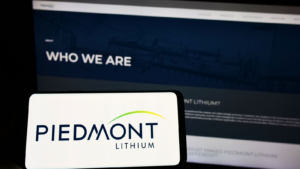While countries like Australia and Chile are major producers of raw lithium ore, China has invested heavily in developing its lithium conversion facilities. Such operations take lithium concentrate from mines and process it into battery-grade lithium carbonate and lithium hydroxide. This is the energy source used in electric vehicle (EV) batteries.
While China is experiencing some cyclical wobbles in its economy, it may be on a long-term trajectory of continued growth. So, expect a possible boon for the following lithium stocks to buy.
Albemarle (ALB)

Albemarle (NYSE:ALB) is a global leader in lithium and specialty chemicals, operating across North America, Chile, and Australia.
The company outlined its expectations for 2024. It includes a decrease in capital expenditures to $1.6 billion – $1.8 billion. That represents a significant drop from approximately $2.1 billion in 2023. This adjustment is part of a broader strategy to re-phase growth investments. ALB is optimizing its cost structure amidst changing market conditions, particularly in the lithium value chain.
The company anticipates net sales between $5.5 billion and $7.6 billion, depending on lithium market prices. Also, it anticipates adjusted EBITDA ranging from $0.9 billion to $2.6 billion.
A Mizuho analyst adjusted Albemarle’s stock price target to $105, which is slightly below its current price, maintaining a neutral rating. This could be a good signal for investors who buy ALB shares in anticipation for the next bull run. Therefore, it could lead to significant capital appreciation in the long run.
Piedmont Lithium (PLL)

Piedmont Lithium (NASDAQ:PLL) aims to become a major North American lithium source. Specifically, government policies favoring EV and battery manufacturing are giving PLL an edge.
Additionally, the company reported a full-year revenue of $39.8 million in 2023. This was derived from sales of 43.2 thousand dry metric tons (dmt) of spodumene concentrate. Despite achieving a gross profit of $5.7 million, Piedmont Lithium recorded a net loss of $21.8 million over the same period.
However, for 2024, analysts forecast a significant revenue increase for PLL, projecting average revenue to be $2.3 billion, based on estimates from three analysts. This anticipated growth is part of a broader trend of increasing revenue forecasts over the next few years. Moreover, predictions for 2025 and 2026 suggest continued expansion.
But the best case for PLL stock is its cheap valuation, trading at just around 20 cents per share at the time of writing. Furthermore, its price-to-sales ratio is far below that of its competitors.
American Lithium (AMLI)

Vancouver-based American Lithium (NASDAQ:AMLI) is advancing its Falchani lithium project in Peru, which has shown promising increases in lithium carbonate equivalent estimates.
Meanwhile, in early 2024, the company highlighted a robust Preliminary Economic Assessment (PEA) for this project. AMLI reveals a significant increase in after-tax Net Present Value (NPV) to U.S.$5.11 billion and an Internal Rate of Return (IRR) of 32%, with low operational expenses.
Financially, AMLI reported a loss of $11.17 million for Q3 ending November 30, 2023, with a loss per share of 5 cents. This financial performance reflects the ongoing investments and expenditures necessary for advancing its lithium and uranium projects.
Also, analysts present a strong buy consensus on the stock, with an average price target of $4.11, suggesting a significant upside potential.
Stocks like PLL and AMLI may be significantly riskier investments, but potential upside exists and justifies those risks.
On the date of publication, Matthew Farley did not have (either directly or indirectly) any positions in the securities mentioned in this article. The opinions expressed are those of the writer, subject to the InvestorPlace.com Publishing Guidelines.
Matthew started writing coverage of the financial markets during the crypto boom of 2017 and was also a team member of several fintech startups. He then started writing about Australian and U.S. equities for various publications. His work has appeared in MarketBeat, FXStreet, Cryptoslate, Seeking Alpha, and the New Scientist magazine, among others.
